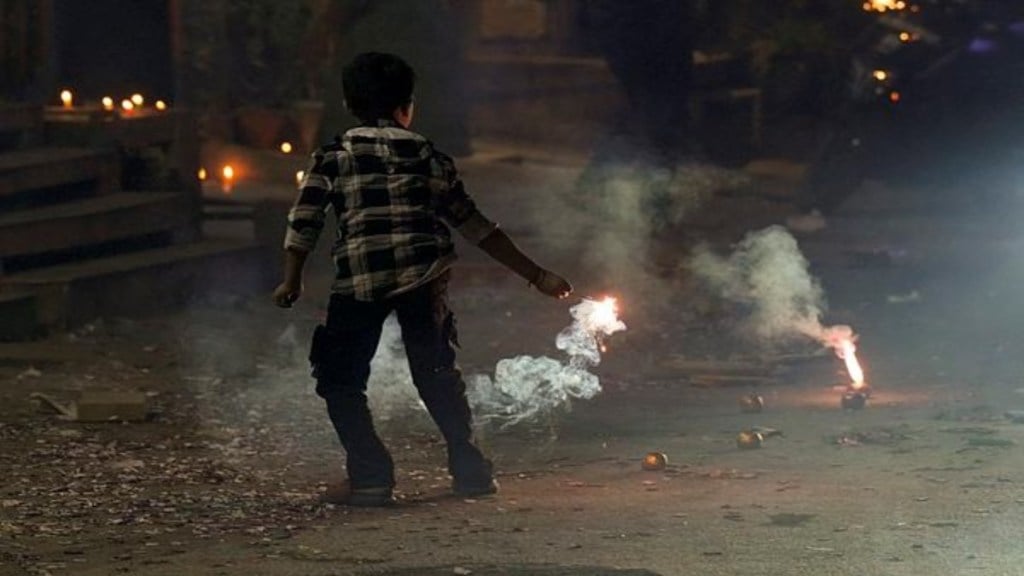Delhi’s air quality has taken a hit post-Diwali, with firecracker usage, despite a citywide ban, and other environmental factors leading to deteriorating air conditions. Although the Delhi government deployed 377 enforcement teams and raised awareness through local groups, large-scale violations were observed across the city. Experts believe that gaps in enforcement, coupled with easy access to firecrackers from nearby regions, have played a significant role in the situation, reports PTI.
Dilip Kumar, Executive Director of Information and Publicity for the Railway Board, noted that firecrackers were accessible across Delhi’s borders, undermining the local ban. With less police visibility and relaxed monitoring at border areas, individuals could easily acquire firecrackers, resulting in non-compliance with the restrictions. Many neighbourhoods in the eastern and western parts of Delhi reported widespread use of crackers, causing the city’s air quality to fall sharply into the “very poor” category. Anand Vihar, for instance, recorded an AQI level in the “severe” range, raising serious concerns for respiratory health.
Despite extensive awareness campaigns from the Delhi Pollution Control Committee (DPCC), actual enforcement rested on the Delhi Police. A senior DPCC official commented that their responsibility was limited to raising awareness, while the police were tasked with maintaining compliance. However, police officials denied any significant failure in administration, asserting that actions were taken against individuals violating the ban. According to the Delhi Police, individuals caught using firecrackers faced legal action and seizure of firecrackers under Section 223 of the BNSS.
Cross-Border Sales of Crackers
Experts have stressed the importance of real-time monitoring tools to track the sale and use of firecrackers within city limits. The lack of such tools hampered authorities’ ability to quickly respond to violations. Rajiv Kakria, convener of Save Our City, a coalition of resident welfare associations (RWAs) and activists, argued that Delhi’s border security remains porous, making it easy for people to obtain firecrackers from nearby areas where restrictions were not as strict. He noted that enforcement had been more effective during the COVID-19 pandemic due to stricter protocols, suggesting a need for greater institutional commitment.
Atul Goyal, president of United RWAs Joint Action (URJA), also attributed the widespread violation to lax enforcement. He pointed out that firecrackers were still being sold in various localities, creating access points even within the city. Goyal advocated for a regional strategy that involves both Delhi and its neighbouring states to uniformly enforce the firecracker ban and curb cross-border sales.
In response to the Diwali air quality spike, meteorologists observed that weather conditions helped prevent the air from reaching the “severe” category expected. According to Mahesh Palawat, Vice President of Meteorology at Skymet, wind patterns from the northwest dispersed pollutants, and moderate temperatures prevented smog formation. However, as wind speeds slow and the direction shifts southeast by early November, the air quality could decline, raising potential health hazards.
Delhi’s government reiterated that the firecracker ban aimed to protect public health rather than interfere with Diwali traditions, countering arguments from some groups that the ban was excessive. As pollution levels continue to pose a challenge, authorities stress the need for ongoing cooperation from the public and a comprehensive enforcement approach that spans across regions.


